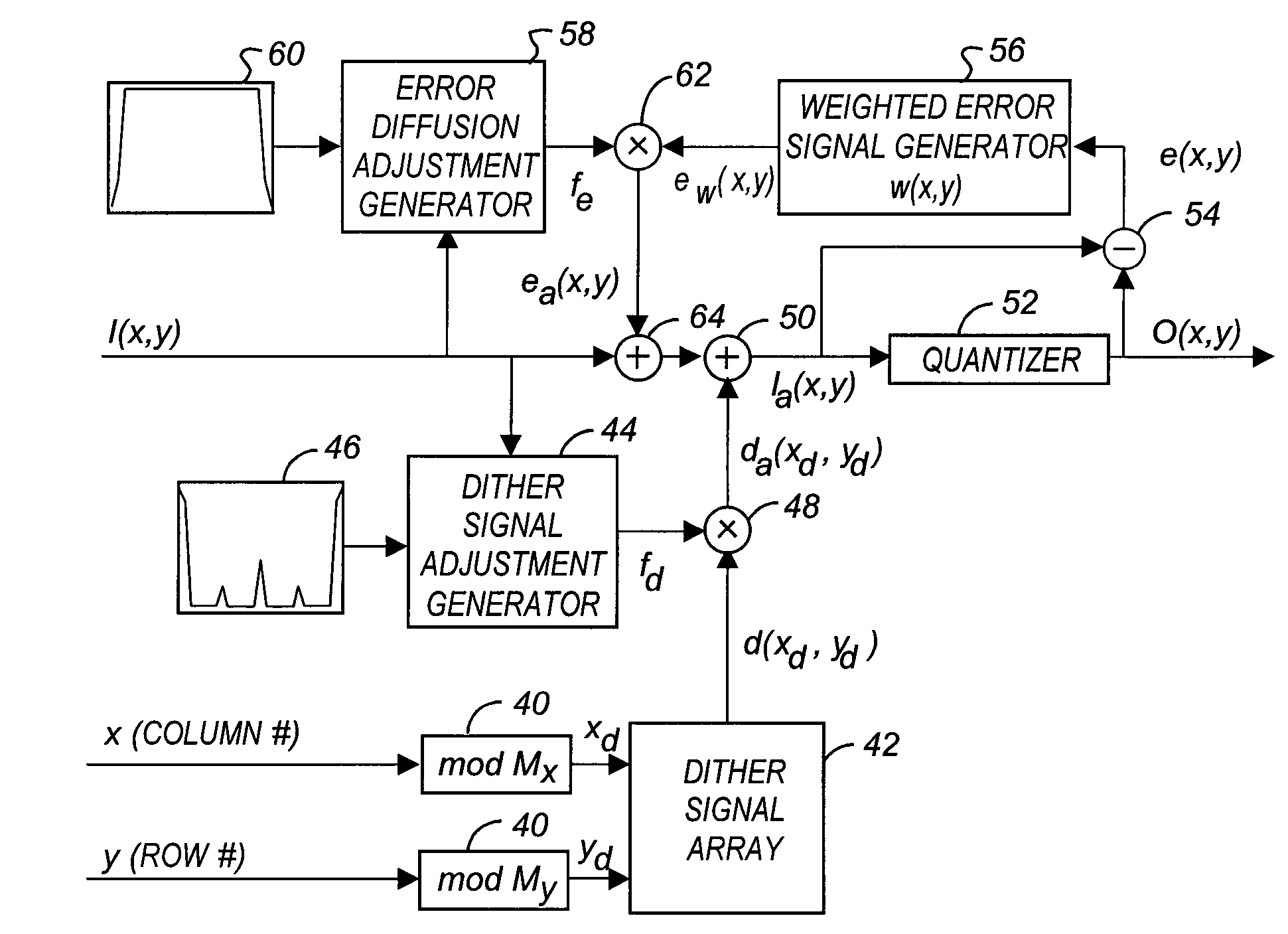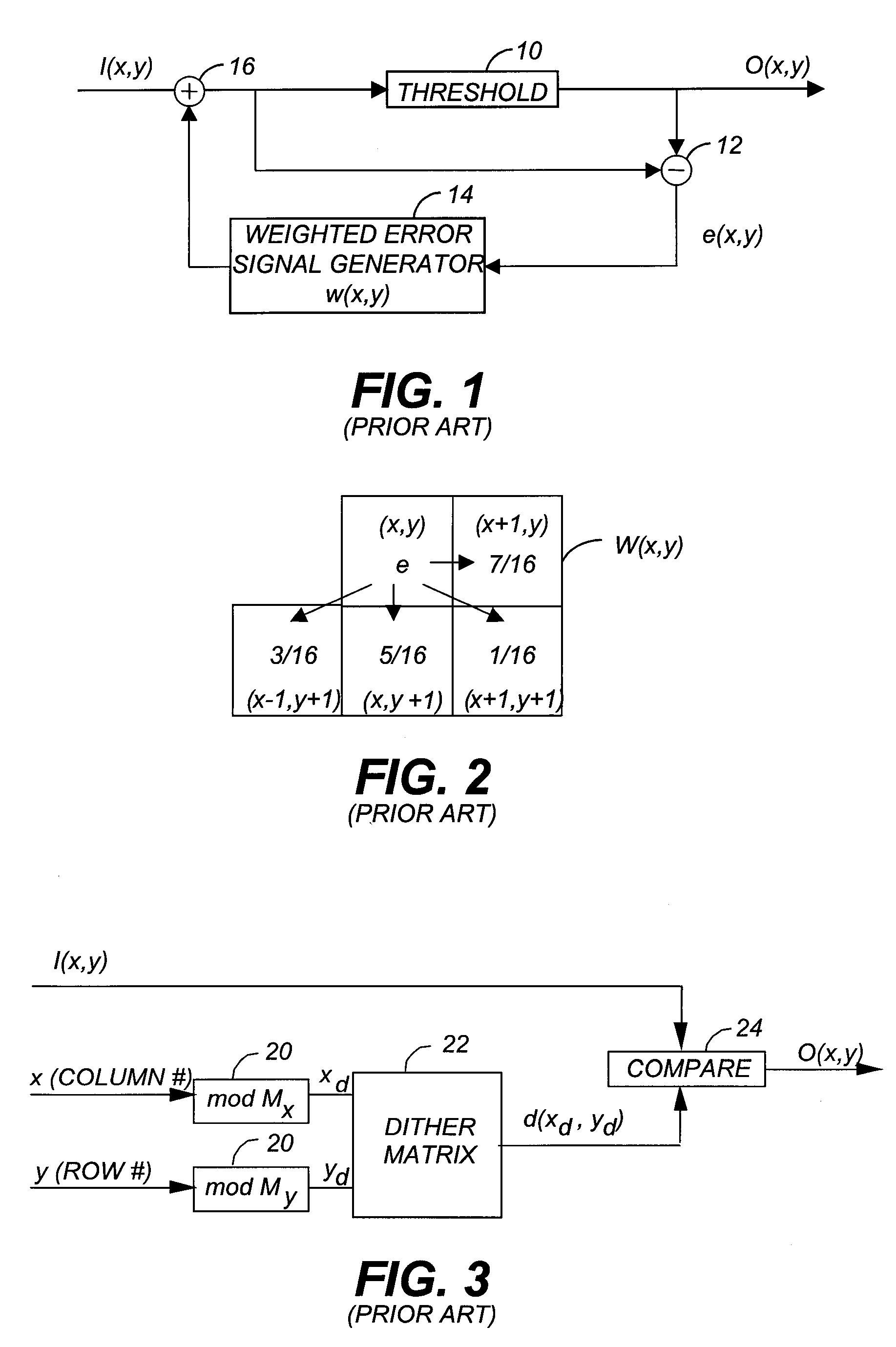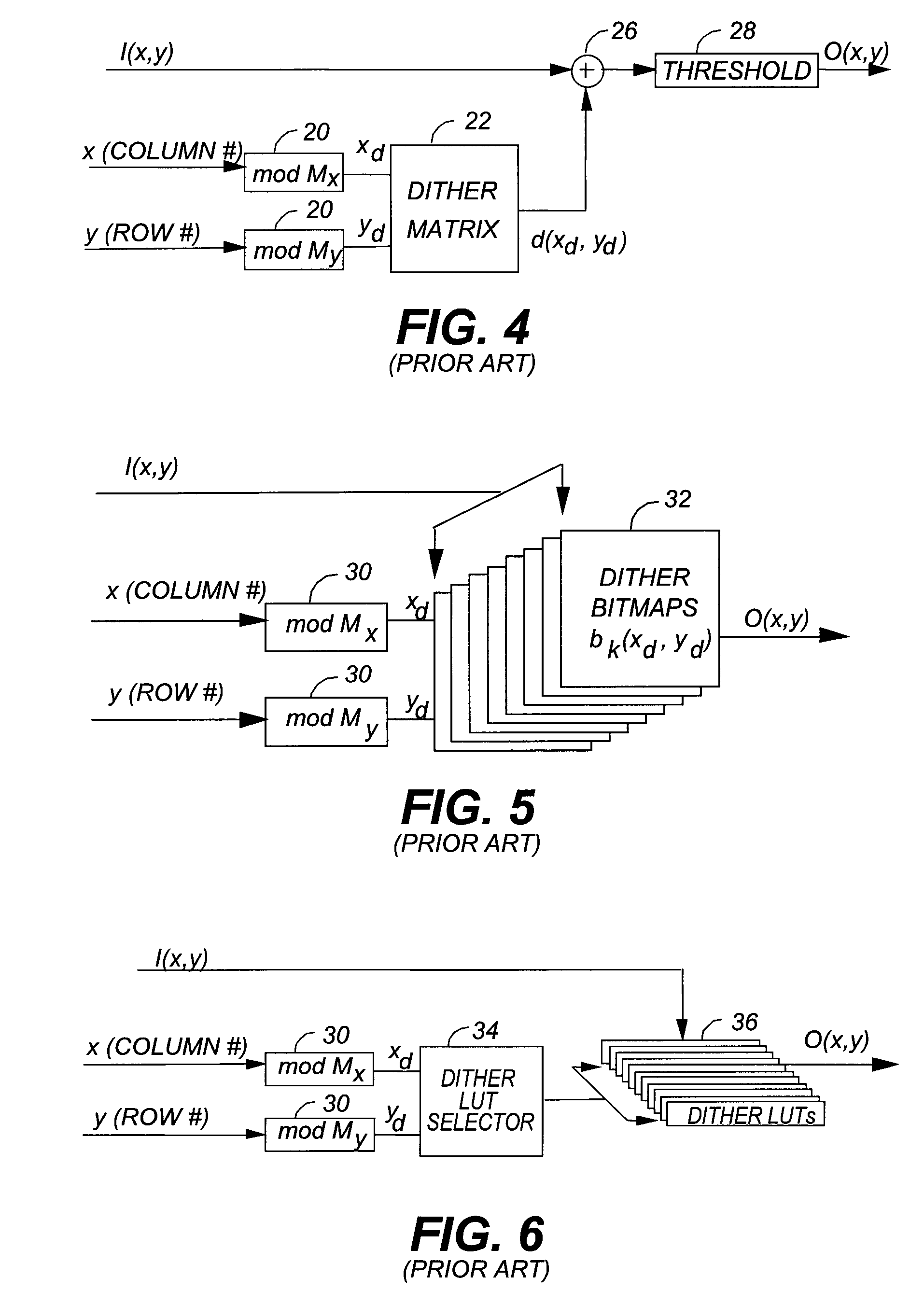Multi-level halftoning providing improved texture uniformity
a texture uniformity and multi-level technology, applied in the field of digital image processing, can solve the problems of increasing the overall graininess of the resulting image, reducing reducing the artifacts of texture contouring and luminance contouring, so as to improve the effect of improving the overall noise level of the image and reducing the amount of nois
- Summary
- Abstract
- Description
- Claims
- Application Information
AI Technical Summary
Benefits of technology
Problems solved by technology
Method used
Image
Examples
Embodiment Construction
[0042]Turning now to FIG. 9, there is shown a flow diagram illustrating the method of the present invention, which is a method for multi-level halftoning an input digital image having input pixels with corresponding input pixel values, I(x,y), and Ni input levels to form an output digital image having output pixels with corresponding output pixel values O(x,y) and No output levels, where 2≦No≦Ni. The column and row addresses of the input pixel are given by x and y, respectively. Modulo operators 40 are used to determine indices xd and yd into a dither signal array 42 from the row and column addresses x and y. The dither signal array is used to determine a periodic dither signal d(xd, yd), which is designed to have low visibility to a human observer.
[0043]A dither signal adjustment generator 44 is used to determine a dither signal adjustment factor fd responsive to the input pixel value I(x,y). In a preferred embodiment of the present invention, this is accomplished using a dither si...
PUM
 Login to View More
Login to View More Abstract
Description
Claims
Application Information
 Login to View More
Login to View More - R&D
- Intellectual Property
- Life Sciences
- Materials
- Tech Scout
- Unparalleled Data Quality
- Higher Quality Content
- 60% Fewer Hallucinations
Browse by: Latest US Patents, China's latest patents, Technical Efficacy Thesaurus, Application Domain, Technology Topic, Popular Technical Reports.
© 2025 PatSnap. All rights reserved.Legal|Privacy policy|Modern Slavery Act Transparency Statement|Sitemap|About US| Contact US: help@patsnap.com



